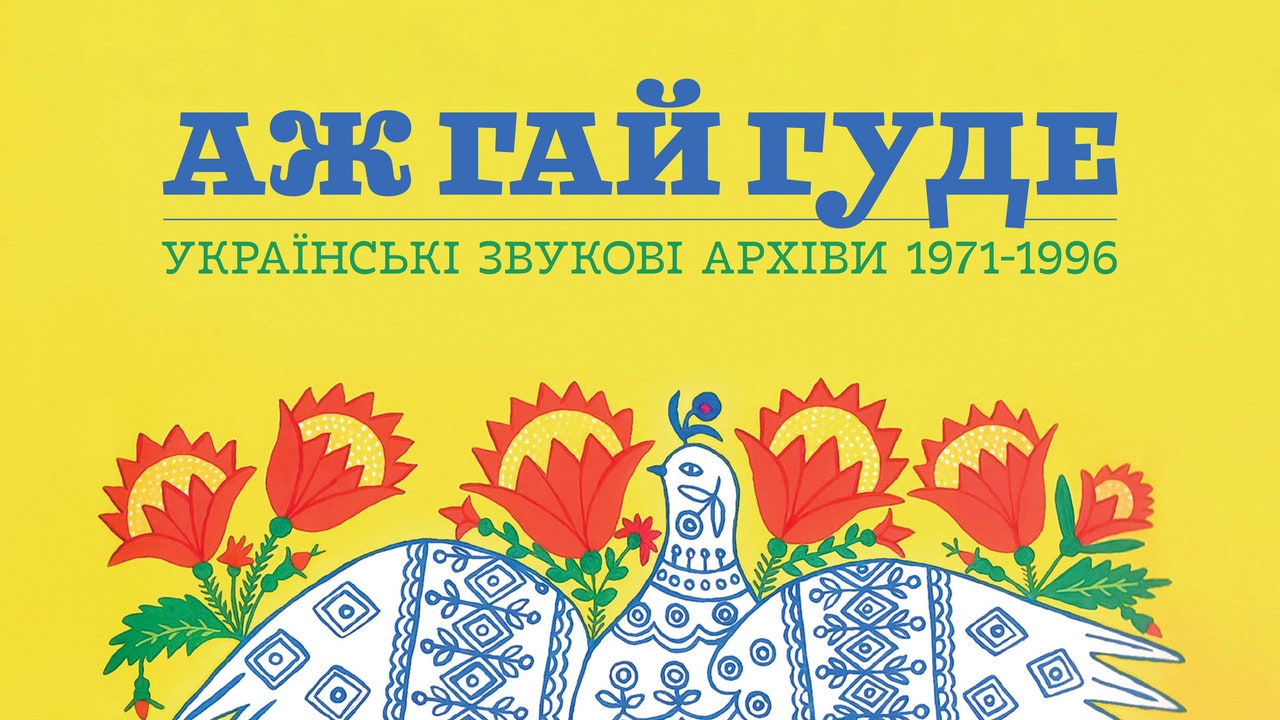The images accompanying the attractive vinyl packaging for Even Forest Hums come from Maria Prymachenko, Ukraine's most famous “naive” artist. The cover image is the 1982 anti-war painting known by the title A Dove has spread her wings and is asking for peace; the back cover is from 1978 Damn this nuclear war! Primachenko, whose home museum outside Kiev was destroyed in the first days of Russia's full-scale invasion, has become a symbol of Ukrainian resilience in recent years. Prymachenko is an example of an artist whose bold experimentation—sometimes supported by Soviet art critics, sometimes suppressed—has become embedded in the complex legacies of modern Ukrainian society. This attempt to integrate a messy story is also reflected in some of the musical choices. “Oh, Get Ready, Cossack, There Will Be a March,” from the lost tape of the Shapoval Sextet's live performance at the 1976 Donetsk Jazz Festival—first found and then released by Shukai in 2020, features the unique timbre of a Soviet electronic organ—turns an anti-imperial and centuries-old Ukrainian epic song into, as Bardetsky puts it, “true spiritual jazz” reminiscent of Pharoah Sanders Karma or John Coltrane A Love Supreme.
There are many revelations here. Ihor Tsymbrovsky's ethereal falsetto on “Beatrice” (1996), set against a piano background, both campy and offbeat, is haunting. But the biggest surprises in this anthology come from the women whose careers Shukai has helped revive in recent years. The “sonic mantra” of Valentina Goncharova's Silence (1989), consisting of reverberant bell tones that reverberate, drop and occasionally weave in ocarina-like whistles, suggests the repetitive gestures of New York's electronic minimalism. The understated sexuality of Svitlana Nianio's 'Episode III' (1994), with its hypnotic vocal melody, reminded me of Nico when he sang an octave higher. Nianio, a member of late 80s Kiev underground favorites Cukor Bila Smert (Sugar White Death), also appears on a song from a 1990 tape that shows part of the fetish for East Asian mysticism and Slavic folklore that flourished in youth subcultures. of the late Soviet period.
Overall, the curatorial flavor tends toward the atmospheric. If you came looking for bangers, you might find yourself sitting on the dance floor swaying to the circular hippie rhythms of Q. Jazz (short for 'Erotic Jazz') and the repetitive taste of flute solos. The audacious task of trying to capture a quarter century's worth of a country's lesser-known musical output in an anthology means that completists may question certain choices and gaps. The two-string jam 'Yarn' (1992), despite its use of the folk hammered dulcimer, is repetitive. the ambient track “Barreras,” by Spanish-born Ukrainian diaspora musician Iury Lech, slows down the pace. Uksusnik, meaning “vinegar,” was the first teenage band of Eugene Hütz, who grew up in the Obolon' district of Kyiv (the “Bronx of Kyiv”) before coming to the US and making waves with the Slavic punk band Gogol Bordello. Uksusnik's song 'North Wind' embodies the sound of a band's tender first attempts at rock'n'roll. the track appears on CD and digital releases, but could not be included on the vinyl release due to format limitations. Such slight discrepancies between the vinyl and CD track listing, and the liner notes annotations, can make for an occasionally confusing listening experience. But the anthology's broad sweep—from state-sanctioned folk rock to disco, exotica, musique konkret and jazz in many forms—offers a fascinating introduction to the range and diversity of Ukrainian music.



